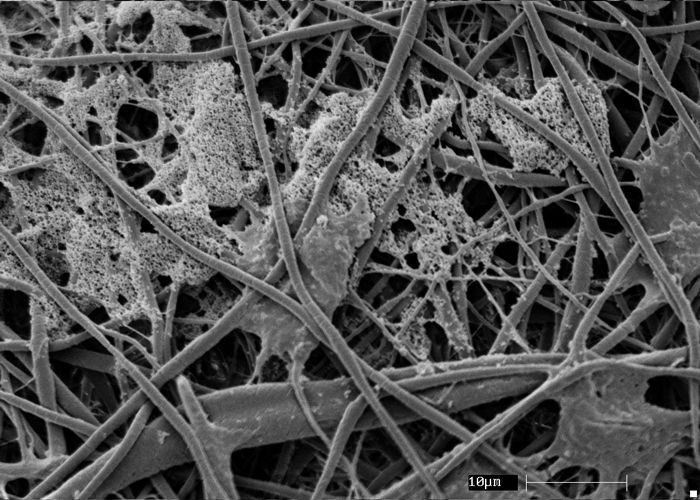Scientists Make Human Bone From Skin Cells

Human bone grown in a laboratory dish has been successfully transplanted into living mice, according to a study published Monday in the Proceedings of the National Academy of Sciences.
The successful transplant represents an important step in the effort to repair human bones.
In the past, scientists have approached the problem of repairing human bones by using synthetic materials or bone transplants, techniques that so far have produced limited results.
Recent research has grown more ambitious, however, as scientists have increasingly experimented with stem cells, including successfully growing arteries and windpipes.
As the population ages, bone repair using stem cells is expected to become increasingly important.
"More and more people will need treatment to fix bone defects," said Giuseppe Maria de Peppo, a tissue engineer at the New York Stem Cell Foundation (NYSCF) and a researcher involved in the study.
The transplantation described in the study involves a technique whereby skin cells are reprogrammed to be like stem cells, capable of undergoing further transformations into any tissue type.
Once the stem cells are reprogrammed, certain chemicals are added, and the cells are placed on a scaffolding to give them structure.
The scaffolding is put in a device called a bioreactor that adds nutrients and removes wastes.
"Bone is more than a hard mineral composite, it is an active organ that constantly remodels. Blood vessels shuttle important nutrients to healthy cells and remove waste; nerves provide connection to the brain; and, bone marrow cells form new blood and immune cells," said Darja Marolt, a NYSCF-Helmsley investigator and one of the study's leads.
In the bioreactor, the bits of bone grow on scaffolding 16 millimeters square (0.025 inches square). The scaffolding is created by washing cow bones in chemicals, a process that leaves behind a collagen structure suitable for the adhesion of cells.
The fully formed human bone pieces are then placed under the skin of mice with non-functioning immune systems, a feature that prevented their bodies from rejecting the implant. The mouse bodies began linking blood vessels to the new bones.
"The [mouse] body recognized the bone as part of the body and started integrating it," said de Peppo.
Researchers hope to repair injuries in animals next, so that similar procedures might someday be performed on people.
The danger presented by the new transplantation approach is that skin cells turned into embryonic-like stem cells can create cancerous tumors.
Nonetheless, in mice, the results have proved promising. Twelve weeks after transplanting human bone cells into mice, no tumors were found, and the bone tissue matured.
"These results indicate the stability of the bone substitutes," researchers said.
Other avenues of bone growth experimentation include using stem cells taken from human embryos, as well as taking stem cells from patients' bone marrow, an invasive procedure that produces low-quality cells, especially when taken from older patients.
"No other research group has published work on creating fully-viable, functional, three-dimensional bone substitutes from human iPS [induced pluripotent stem] cells," said de Peppo. "These results bring us closer to achieving our ultimate goal, to develop the most promising treatments for patients."
The New York Stem Cell Foundation is an independent organization founded in 2005, with a mission to accelerate cures and better treatments for patients through stem cell research.
Published by Medicaldaily.com



























